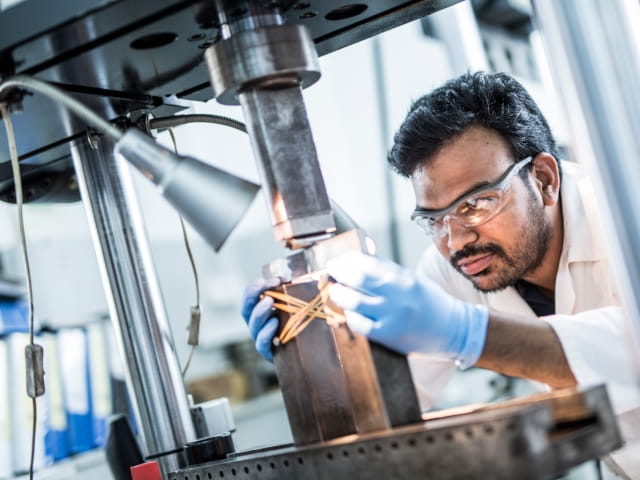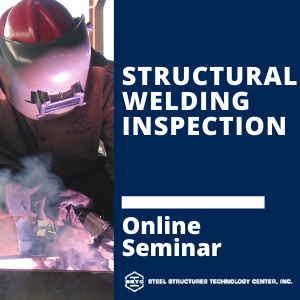Why Choose Professional Welding Inspection Gilbert Arizona for Your Jobs?
Why Choose Professional Welding Inspection Gilbert Arizona for Your Jobs?
Blog Article
Exploring the Significance of Welding Examination in Industrial Applications: Safeguarding Versus Failings and Enhancing Durability
Welding evaluation functions as a critical line of protection in industrial applications, ensuring the architectural honesty and reliability of welded components. By systematically determining flaws such as porosity and incomplete fusion, assessments not only avoid failings however also expand the life-span of vital properties. Following market standards boosts both security and operational efficiency; nonetheless, the ramifications of disregarding these methods can be extreme. As we analyze the diverse benefits of normal assessments, it becomes apparent that understanding these dynamics is not simply an issue of compliance however a tactical crucial for long life and risk reduction (Welding Inspection Gilbert Arizona).
Duty of Welding Evaluation
Welding evaluation serves as a critical secure in industrial applications, making certain that welded structures meet defined criteria of top quality and safety and security. This procedure includes a systematic evaluation of welds to verify their integrity, toughness, and compliance with established codes and specs. The function of welding evaluation is complex, including both visual evaluations and non-destructive testing approaches, which may include ultrasonic, radiographic, or magnetic particle testing.

Additionally, welding assessment plays an essential function in regulative conformity. Ultimately, the role of welding evaluation is crucial in promoting safety and security, boosting efficiency, and protecting investments in industrial facilities.
Common Welding Flaws

One of the most widespread issues is porosity, identified by tiny gas pockets entraped within the weld steel. This takes place as a result of contaminants or incorrect protecting gas, jeopardizing the weld's strength. Another significant issue is insufficient fusion, where the weld metal fails to bond correctly with the base material, possibly leading to architectural weak points.
Splits can likewise establish during or after the welding process, often credited to thermal stresses or improper air conditioning rates. Additionally, damaging, where the base metal is eroded along the weld grain, can compromise the joint and is typically caused by too much warm input or incorrect strategy.
Furthermore, lack of penetration occurs when the weld metal does not get to the origin of the joint, leading to poor stamina. Understanding these usual defects is crucial for inspectors and welders alike to make sure that bonded structures satisfy safety and security and performance criteria, ultimately protecting against possible failures in commercial applications.
Benefits of Routine Inspections
Routine examinations work as a critical secure in guaranteeing the integrity and longevity of bonded frameworks. These assessments identify prospective issues and weaknesses that may jeopardize the honesty of welds, enabling timely remediation before problems intensify. By applying an organized evaluation routine, organizations can substantially minimize the threat of catastrophic failures that may result in expensive downtime, tools substitute, and even crashes.
Moreover, regular evaluations add to enhanced quality control throughout the welding process. By adhering to a constant assessment schedule, firms can make sure that their welding techniques meet established quality benchmarks and best practices. This not only promotes a society of responsibility but also encourages continual renovation amongst welding workers.
On top of that, normal examinations assist in better maintenance planning. By identifying damage early, organizations can purposefully arrange replacements and important source repairs, decreasing interruption to operations. This aggressive technique eventually leads to extended property life expectancy and improved total efficiency.
Lastly, a dedication to routine assessments can enhance a firm's track record in the industry. Customers and stakeholders progressively worth companies that prioritize safety and security and high quality, thereby enhancing trust and possibly resulting in boosted company possibilities.
Industry Specifications and Regulations
Following sector standards and regulations is an essential facet of welding evaluation that enhances the benefits of routine examinations. These criteria, developed by organizations such as the American Welding Culture (AWS) and the American Culture of Mechanical Designers (ASME), offer a structure for ideal practices in welding procedures, materials, and inspection techniques. Conformity with these guidelines makes read review certain that welds fulfill the needed quality and security benchmarks, substantially lowering the risk of structural failings.
Regulatory bodies like the Occupational Safety and Health Administration (OSHA) additionally apply standards that protect workers and the environment during welding operations. By following these established requirements, markets can improve the dependability of their parts and frameworks, ensuring they do as meant under different operational conditions.
In addition, adherence to industry criteria fosters consistency in quality assurance, facilitating smoother communication among stakeholders and regulatory agencies. This alignment not only decreases responsibility threats but also improves the credibility of organizations in open markets. Inevitably, conformity with welding standards and regulations is not merely a legal responsibility; it is a vital investment in safety and security, efficiency, and lasting functional success.
Future Trends in Welding Examination
As industries remain to advance, the future of welding examination is poised to integrate advanced technologies that enhance accuracy and efficiency. Among one of the most significant trends is the adoption of automation and robotics in inspection procedures. Automated systems can perform inspections rapidly, decreasing human error and enhancing throughput in manufacturing settings.
Additionally, the combination of man-made intelligence (AI) and maker learning algorithms will certainly enable anticipating analytics, enabling real-time evaluations and positive maintenance (Welding Inspection Gilbert Arizona). By examining data from previous inspections, these technologies can identify patterns that might suggest prospective failures, consequently expanding the life expectancy of bonded elements

In addition, the trend towards digitalization will certainly bring about enhanced information management systems that help with much better monitoring, reporting, and compliance with market standards. In summary, the future of welding assessment is characterized by technological improvements that assure to significantly improve reliability, find out here security, and functional performance in various industrial applications.
Final Thought
In verdict, welding assessment serves a vital feature in making certain the stability and sturdiness of bonded frameworks across numerous industrial applications. As advancements in technology proceed to progress, the future of welding evaluation promises increased precision and effectiveness, ultimately adding to the long life of important facilities.
Welding inspection offers as a vital line of defense in industrial applications, guaranteeing the structural stability and integrity of welded parts.Welding examination serves as a critical protect in industrial applications, guaranteeing that bonded frameworks satisfy defined criteria of high quality and safety and security - Welding Inspection Gilbert Arizona. Ultimately, the function of welding assessment is crucial in advertising safety, improving efficiency, and protecting investments in industrial framework
These standards, established by organizations such as the American Welding Culture (AWS) and the American Culture of Mechanical Designers (ASME), provide a framework for finest techniques in welding procedures, products, and examination techniques.In conclusion, welding assessment offers an essential function in ensuring the integrity and longevity of bonded frameworks throughout various industrial applications.
Report this page